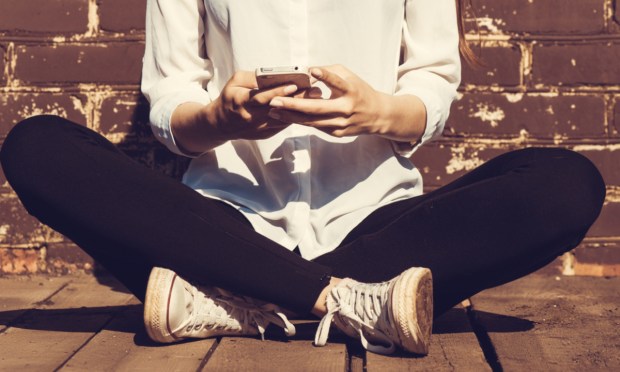Texting Connections: Companies Drive Conversations Into Conversions, Vibes Says

In today’s economy, retailers are on a perpetual quest to connect with their consumers in more meaningful ways. In this pursuit, the focus has shifted toward leveraging the channels where consumers are already engaged.
While third-party advertisements are by no means a new concept, they are experiencing a resurgence as businesses strive to master the art of personalization. Take The RealReal, for example, which announced during its second quarter earnings call Aug. 8 that the resale platform has been incorporating third-party ads to boost revenue.
Read more: The RealReal Looks to Third-Party Ads as It Retools Resale Platform
Channels like email are showing signs of fatigue, prompting a search for novel avenues. This is where SMS and mobile wallet marketing have been carving out a place, capitalizing on their potential to create valuable, direct connections with consumers.
One of the most coveted locations in the marketing landscape is the mobile lock screen. It is a space that features high visibility and engagement, as users interact with their lock screens countless times a day. Capitalizing on this, brands are strategizing ways to secure a spot on the lock screen.
In an interview with PYMNTS, Alex Campbell, the co-founder and CIO of Vibes, a platform focused on mobile engagement, delves into mobile technology in marketing. Its influence will grow as artificial intelligence (AI) begins to shape how businesses can leverage this channel.
“Ninety-seven percent of texts are read within three minutes. Email, on the other hand, maybe people see it, maybe they don’t,” Campbell says.
Expanding on this, the ability to deliver personalized notifications to the lock screen increases retailers’ chances that their messages will be noticed and acted on. Whether it’s a time-sensitive discount, a new product launch, or a special event, the mobile lock screen offers an opportunity for immediate impact.
However, Campbell says that while mobile marketing can generate ideal outcomes, it’s a channel that should be used methodically and thoughtfully. “You just have to be very careful with the content itself,” he says.
Through its newly introduced AI-powered Nexus engine, Vibes aims to offer its clients access to a wealth of insights and best practices garnered from its wide-ranging customer pool.
Campbell says that the abundance of information often contains insights that challenge preconceived notions. To illustrate, he cites the case of a client focused on new mothers. Initially, the client aimed to send messages at about 10 or 11 a.m. However, AI analysis revealed that 7:30 p.m. was a more suitable time, when mothers settle their children to sleep and explore shopping opportunities.
Leveraging Mobile
With such valuable marketing real estate as the mobile lock screen, consumers will not hesitate to opt out of messages that feel irrelevant, spammy or too frequent.
“Once you’re out, you’re out,” Campbell says. It’s crucial that these messages be purposeful and tailored. Campbell also says that maybe messaging a customer once a week might be more optimal than three times a week or even day, depending on the brand and vertical.
By employing personalized messages through a blend of SMS strategies and the features of a mobile wallet, retailers yield better results than email. According to Campbell, sending offers through the wallet results in a roughly 3.7 times higher return than link-based methods such as email. The device serves as a reminder, notifying users about time-sensitive offers and reinforcing the sense of urgency surrounding the deal.
To provide an instance, Campbell says a Vibes client, focusing on in-store visits, experienced a 26% surge in redemption rates. This improvement was linked to sending a reminder 48 hours before the offer’s expiration.
Reaching Consumers via Mobile
Campbell says the most effective mobile programs are those that seamlessly guide customers throughout their purchasing journey. This includes facilitating various steps such as research, store information, and other essentials.
“If I’m coming to Chipotle, and I’m in line to order and my phone helps me remember that I’m part of the loyalty program and I can get credit — that’s helpful,” he says.
So whether it be personalized discounts, a reminder to take advantage of a discount two blocks away, or offering a reward to keep consumers engaged — regardless of the nature of the interaction, its ultimate purpose should be to deliver meaningful value to the customer.
